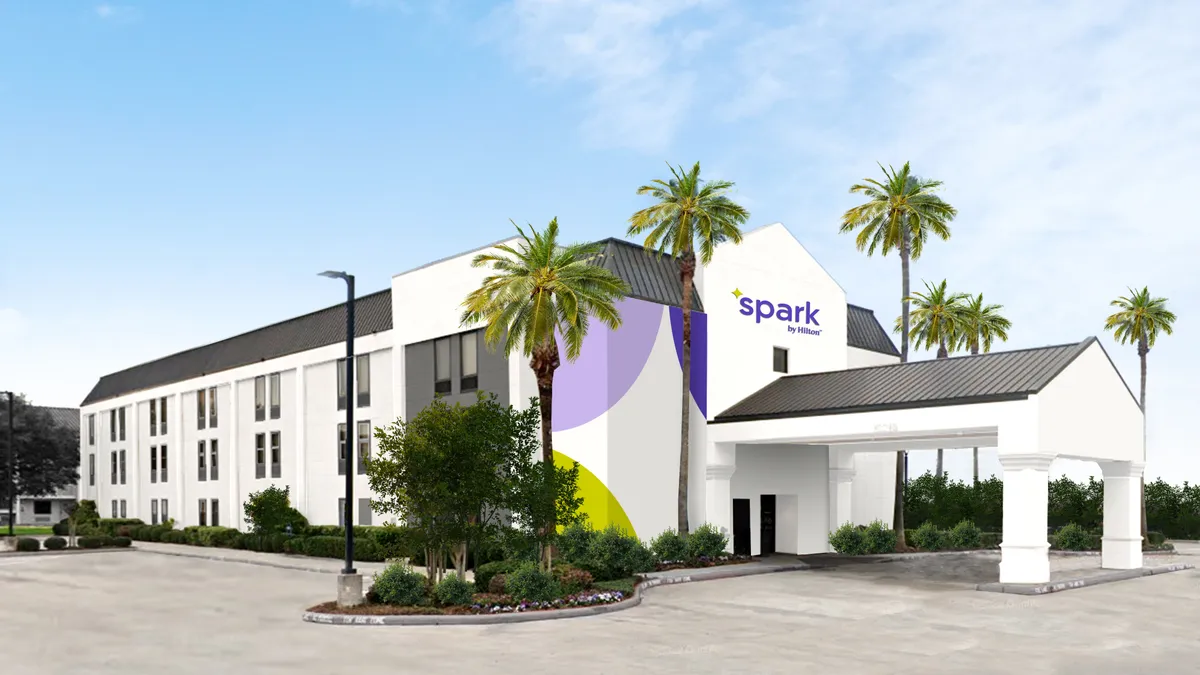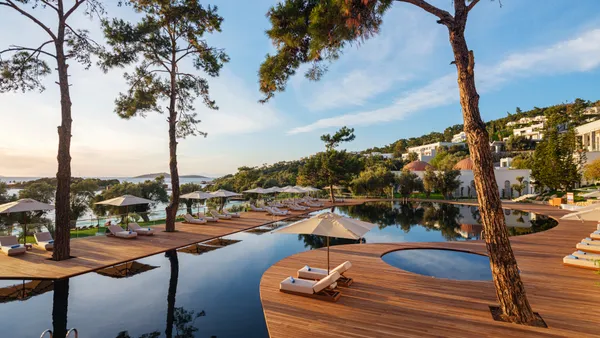Dive Brief:
- Hilton posted strong results for its second quarter on Wednesday, raising its full-year outlook. Q2 net income was $413 million, exceeding the high end of guidance. Adjusted Q2 EBITDA was $811 million, also exceeding expectations.
- RevPAR was also stronger than expected, up 12.1% as compared to the same period in 2022. For H1 2023, system-wide RevPAR increased 19.7% compared to the same period in 2022. Compared to pre-pandemic results, system-wide comparable RevPAR for H1 increased 8.8% compared to the same period in 2019.
- The company credited strength in leisure and business transient demand, as well as strong group recovery, for its positive results. In the company’s earnings call, President and CEO Christopher Nassetta also pointed to Hilton’s growing development pipeline as a source for future growth.
Dive Insight:
While Nassetta acknowledged the ongoing normalization of leisure travel demand in the earnings call, he said Hilton’s leisure travel segment is still strong. Normalization the company is seeing, he said, is mostly coming down from “crazy highs” in markets like South Florida, Southern California and Hawaii.
“We’re having a wildly strong summer in leisure,” he said.
While largely flat compared to peak pre-pandemic levels, group recovery remained robust, he added.
In the second quarter, Hilton opened 92 new hotels, achieving a net unit growth of 11,200 rooms, bolstered in particular by growth in the Asia Pacific region. The company also added over 36,000 rooms to its global development pipeline during Q2.
In the call, Nassetta noted the strength of its Spark brand. The premium economy brand, which launched in January of this year, had approximately 60 hotels in the pipeline as of June 30.
“We’re only going to open 20 [Spark hotels] this year,” he said. “You should assume we’re going to open a lot more than that next year.”
Nassetta also noted “tremendous” interest from owners and developers in Hilton’s forthcoming extended-stay brand Project H3, which was announced in May.
Hilton’s strong second quarter follows up on trends it noted in its first quarter, which was also bolstered by strength in leisure and business transient demand, as well as international recovery.











